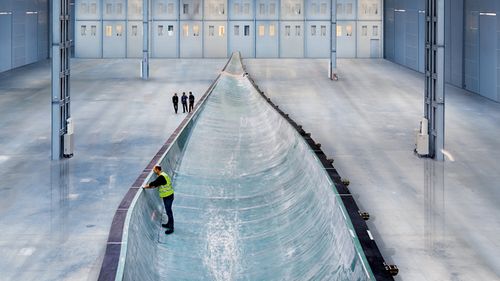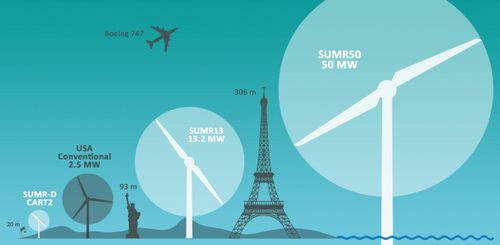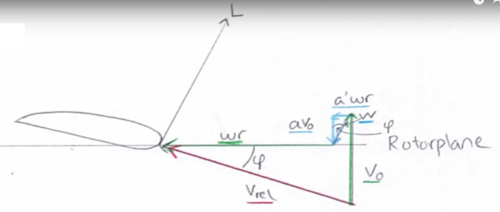105-2019201 Practice 2
Wind turbines 101
Question 1
One of the simplest models for understanding wind turbines is the 1-D momentum model. In 1-D momentum model, the wind turbine acts as a braking disk, that reduces the speed of incoming air from to .
The kinetic energy carried by the incoming wind is
where the mass of incoming air is
If the wind turbine has area A, the mass of air it receives per unit time is
(a)
Calculate the incoming wind power (incoming energy per time) at the blades of the turbine. How does it change with the area the blades cover? How does it change with the incoming wind speed?
(b)
The kinetic energy of the air mass after the blade can not be zero (otherwise air would not flow). Prove that the effective power (the power that can be used by the turbine) is given by
Note: because the mass flow must be continuous, the area after the wind turbine is bigger than the area before. Assume
(c)
The power coefficient characterizes the relative drawing power:
prove that its optimum value is %59
Question 2
However, this model does not take into account the rotational motion of the blades.
(a)
Assuming the Lift force dominates in the blades, and a rotation is induced by what is the linear speed of a section of the blade far away from the center?
(b)
A wind turbine converts wind energy to electrical energy by converting it first to rotational kinetic energy, then to electric energy by a generator. SUMR 50 generator (the first picture) has three blades of 200 m length separated by 120 degrees each. It is designed such that the tip of the blades has a nominal operating linear velocity of . Model each blade as a thin rod. What is the nominal rotational kinetic energy of the turbine?




















